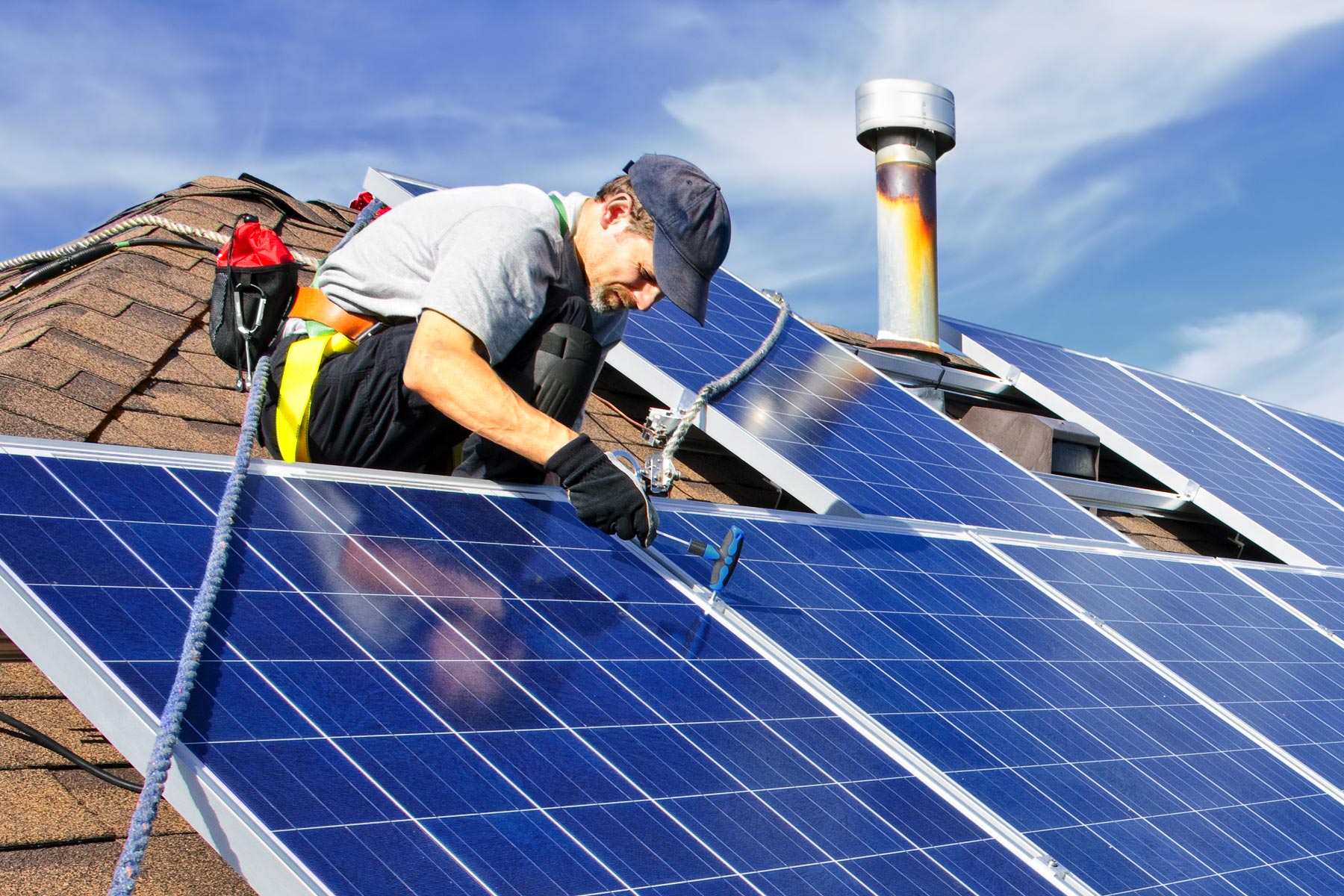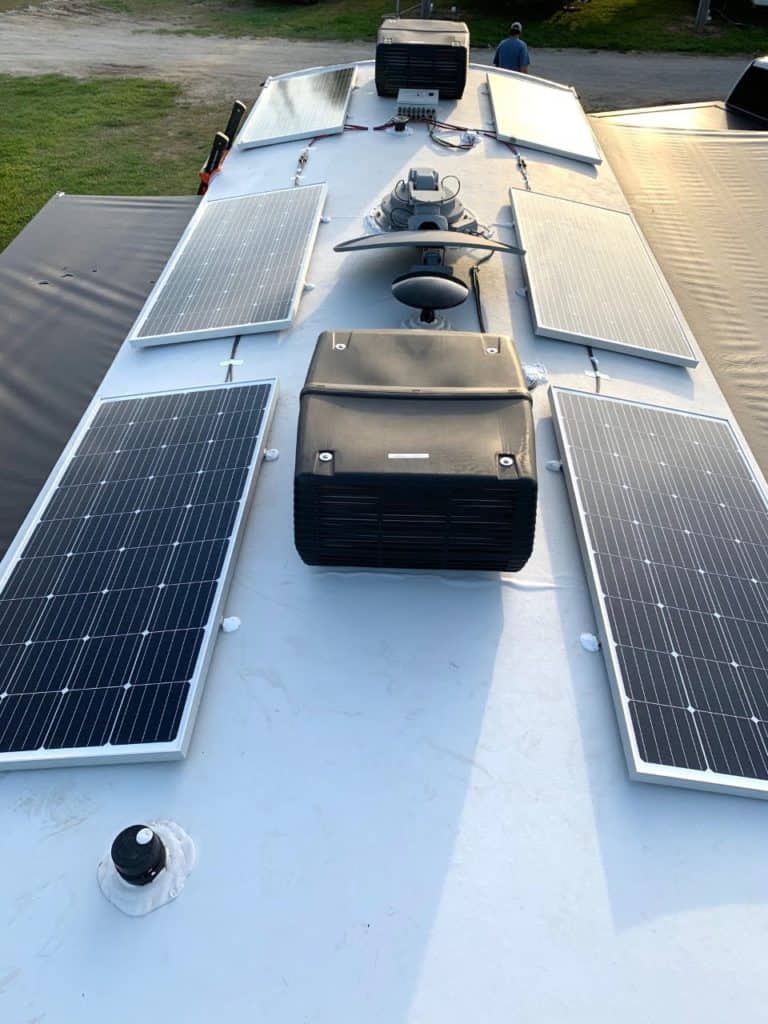Beginner’s Guide to a Successful Solar Installation
Wiki Article
Checking Out the Different Kinds Of Solar Panels and Their One-of-a-kind Benefits
The landscape of solar panels offers various choices, each with unique advantages fit to different applications. Monocrystalline panels stick out for their effectiveness and appearances, while polycrystalline designs interest budget-conscious customers. Thin-film modern technology offers versatility in installation. Cutting-edge layouts like bifacial and building-integrated photovoltaics additionally improve the appeal of solar power. Understanding these distinctions is necessary for making informed decisions. The inquiry remains: which type will best satisfy certain power needs?Monocrystalline Solar Panels
Although different kinds of solar panels are readily available, monocrystalline solar panels are often concerned as one of the most reliable alternative. These panels are made from a solitary crystal framework, generally silicon, which allows them to transform sunshine into power a lot more properly than other kinds. The effectiveness rates for monocrystalline panels can vary from 15% to over 22%, making them a prominent option for business and domestic installations where area is restricted.
Polycrystalline Solar Panels
Polycrystalline solar panels are created making use of a distinct manufacturing procedure that includes melting multiple silicon crystals together. This approach can result in benefits such as reduced manufacturing prices, making them a preferred selection for several customers. Nonetheless, their effectiveness and performance elements may vary contrasted to various other sorts of photovoltaic panels, warranting mindful consideration.Production Refine Benefits
The production process of polycrystalline solar panels uses several advantages that add to their appeal in the renewable energy field. The manufacturing makes use of silicon scrap, which lowers waste and decreases material expenses, making it economically viable. Unlike monocrystalline panels, the production of polycrystalline panels involves less complex and much less energy-intensive methods, leading to a smaller sized carbon footprint. In addition, the spreading procedure allows for the development of several cells at the same time, boosting efficiency in manufacturing. This technique likewise brings about a more consistent framework, which can improve the overall efficiency and longevity of the panels. As a result, polycrystalline solar panels offer an economical solution for consumers while promoting sustainable manufacturing practices within the market.Efficiency and Efficiency Factors
How do efficiency and efficiency variables influence the efficiency of polycrystalline solar panels? These panels commonly show reduced performance prices, balancing around 15-20%, contrasted to their monocrystalline counterparts. Elements such as temperature level level of sensitivity, shielding, and the angle of installation greatly affect their performance. Polycrystalline panels tend to carry out far better in cooler climates yet may battle in high temperatures, resulting in reduced output. In addition, their performance can be impacted by dirt and debris buildup, requiring regular maintenance. Despite these obstacles, polycrystalline panels are a lot more budget-friendly and provide a solid equilibrium between expense and efficiency. Recognizing these effectiveness and performance factors is essential for consumers looking for to maximize solar energy manufacturing and overall system effectiveness.Thin-Film Solar Panels
Thin-film solar panels stand for a functional and light-weight option in the solar power landscape. These panels are built by depositing one or even more thin layers of photovoltaic or pv material onto a substrate, which can consist of plastic, glass, or steel. This production procedure enables better flexibility in design and applications compared to conventional crystalline photovoltaic panels.
Thin-film innovation generally features reduced efficiency prices, however it compensates for this with reduced production costs and improved efficiency in low-light conditions. Their lightweight nature makes them appropriate for installation on varied surface areas, including bent frameworks and vehicles. Additionally, these panels can be integrated into building materials, supplying visual advantages along with power generation.
Bifacial Solar Panels
Bifacial solar panels are gaining interest for their improved performance and efficiency, as they can record sunshine from both sides. This dual-sided layout allows for raised energy manufacturing, especially in reflective atmospheres. Furthermore, their installation uses potential expense benefits, making them an eye-catching alternative for various applications.Efficiency and Performance
The efficiency and efficiency of solar panels are important consider identifying their effectiveness in energy generation, with bifacial solar panels standing out for their innovative style. These panels feature photovoltaic cells on both sides, permitting them to catch sunlight from several angles. This dual-sided ability improves power result, particularly in atmospheres with reflective surface areas, such as snow or sand. Bifacial solar panels can enhance energy manufacturing by 10-20% contrasted to standard monofacial panels. Their capability to harness indirect sunlight contributes to their total performance, making them an engaging choice for numerous applications. Developments in modern technology continue to boost their performance metrics, solidifying their location in the renewable energy landscape as an extremely reliable service for solar power generation.installation and Expense Advantages
When thinking about the advantages of bifacial photovoltaic panels, the installation process and cost advantages are significant variables that can influence decision-making for both commercial and residential applications. Bifacial panels can be installed on numerous frameworks, including rooftops and ground installations, allowing for flexible implementation. Their ability to soak up sunshine from both sides improves power generation without needing extra panels. This performance can cause reduced general installation prices, as fewer systems might be needed to attain desired power results. click over here Furthermore, their longevity frequently equates to lower upkeep costs with time (Solar Installer). As a result, the long-term monetary benefits, incorporated company website with installation flexibility, make bifacial solar panels an attractive option for those looking for sustainable energy solutionsBuilding-Integrated Photovoltaics (BIPV)
Building-Integrated Photovoltaics (BIPV) represent a considerable advancement in solar technology, perfectly integrating solar cells into structure products such as frontages, roofing systems, and home windows. This cutting-edge technique not only generates renewable resource but likewise improves the aesthetics and capability of structures. BIPV systems can replace conventional building products, minimizing the overall expense of construction while adding to power performance.The assimilation of solar innovation into building style permits for far better area application, as these systems can be installed without needing additional land. On top of that, BIPV remedies are adjustable, making it possible for designers to produce special layouts that match the building's overall look. The double functionality of BIPV-- offering both as a power generator and a structural component-- supplies substantial benefits in urban atmospheres where space is restricted. As understanding of lasting building practices grows, BIPV is ending up being a significantly eye-catching choice for developers and home owners alike.
Concentrated Photovoltaic (CPV) Systems
Concentrated Photovoltaic (CPV) systems represent a sophisticated solar technology that uses lenses or mirrors to focus sunshine onto high-efficiency solar batteries. This ingenious strategy allows for the collection of considerably even more solar power than conventional photovoltaic or pv systems. By focusing sunlight, CPV systems can attain higher performances, usually surpassing 40%, making them especially suitable for locations with high direct sunlight.Furthermore, CPV systems generally call for less land area contrasted to conventional solar panels, as they produce more power from a smaller sized impact. These systems frequently integrate monitoring systems that adjust the setting of the lenses or mirrors to comply with the sun's motion, making the most of power capture throughout the day. However, CPV technology is best suited for specific geographical locations, where straight sunlight is abundant, limiting its applicability in regions with constant cloud cover. Generally, CPV systems present an encouraging option for enhancing solar power production in perfect atmospheres
Contrast of Photovoltaic Panel Performance and Expense
Various solar panel innovations exist, their efficiency and price can considerably vary, influencing customer selections and market dynamics. The most common kinds-- polycrystalline, monocrystalline, and thin-film-- display distinctive features in performance and rates. Monocrystalline panels tend to provide the greatest performance rates, typically surpassing 20%, yet they usually feature a greater cost. In contrast, polycrystalline panels are generally more affordable, with effectiveness around 15-20%, making them a popular selection for budget-conscious customers. Thin-film innovations, while much less efficient at approximately 10-12%, give flexibility and lower installation costs, reference appealing to details applications.Ultimately, selecting the ideal solar panel includes weighing the equilibrium between effectiveness and price. Customers should consider their energy requires, spending plan restrictions, and lasting cost savings capacity, as these variables will dictate the finest choice for their solar energy system.
Often Asked Concerns
For How Long Do Solar Panels Normally Last Before Requiring Replacement?
Solar panels normally last in between 25 to thirty years before needing substitute. Their resilience relies on various aspects, consisting of top quality, setup, and regional ecological conditions, which can affect their effectiveness and longevity gradually.
Can Solar Panels Operate In Cloudy or Rainy Issues?
Solar panels can indeed work in wet or over cast conditions, albeit at reduced performance. They still catch scattered sunshine, permitting power generation, though power output might be considerably reduced than on warm days.What Maintenance Is Required for Solar Panels?
Routine maintenance for solar panels includes routine cleansing to remove dirt and debris, evaluating for damage, guaranteeing connections are safe, and assessing system efficiency. Normal examinations can boost efficiency and lengthen the life-span of the panels.Exist Any Environmental Influences From Manufacturing Solar Panels?
Yes, making solar panels can have ecological influences, consisting of resource extraction, power consumption, and waste generation. Nevertheless, improvements in modern technology aim to decrease these results, advertising even more lasting practices in production and reusing processes.Just how Do I Pick the Right Photovoltaic Panel for My Home?

Different types of solar panels are available, monocrystalline solar panels are typically concerned as the most reliable alternative. Thin-film solar panels stand for a versatile and lightweight alternative in the solar energy landscape. The performance and performance of solar panels are necessary aspects in identifying their effectiveness in energy generation, with bifacial solar panels standing out for their cutting-edge style. Building-Integrated Photovoltaics (BIPV)
Building-Integrated Photovoltaics (BIPV) represent a significant evolution substantial solar technology, modern technology incorporating flawlessly including into building right into structure as roofs, roofings, and facades. Concentrated Photovoltaic (CPV) systems represent an innovative solar technology that mirrors or makes use of lenses to concentrate sunshine onto high-efficiency solar cells.
Report this wiki page